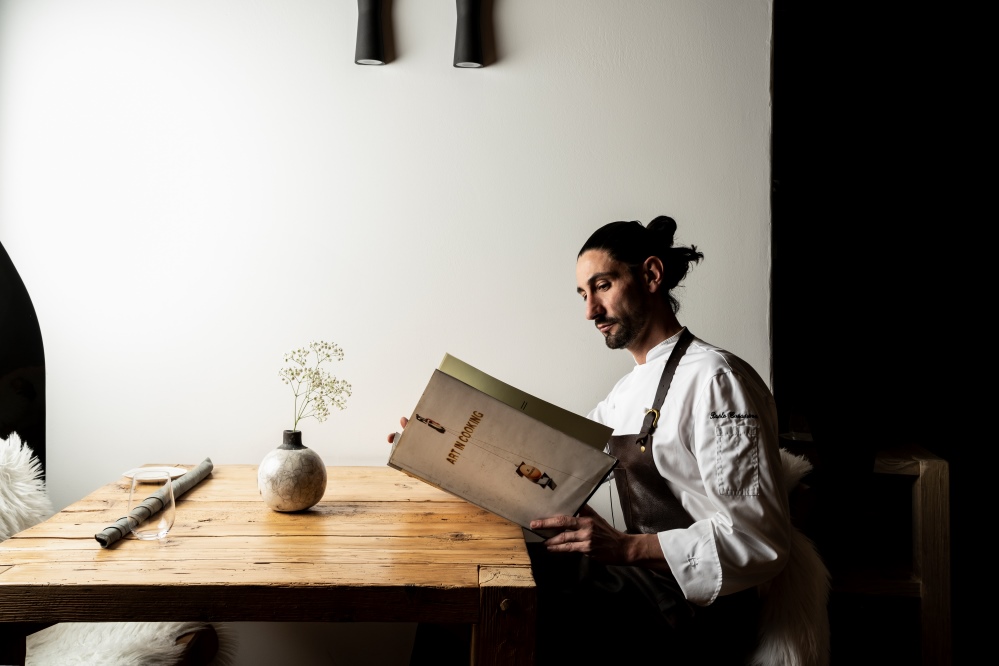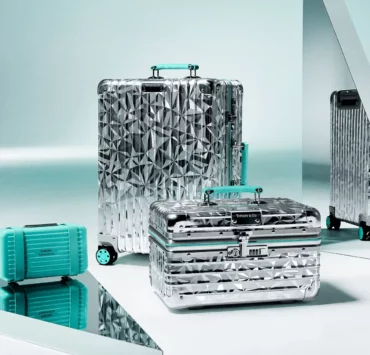Paolo Casanova: Italian Influences in Swiss Haute-Cuisine
Amidst the picturesque setting of Engadin, we had the opportunity to immerse ourselves in the culinary world of Chef Paolo Casanova, the mastermind behind the Michelin-starred Colani restaurant. Casanova, more an artist than a chef, passionately illustrates his culinary ethos – a deep veneration for the authenticity of ingredients.
At Restaurant Colani, Chef Paolo, assisted by his adept team and equally passionate Stella Guarneri, his wife, crafts culinary memories. The ambience, with the soft glow emanating from the hall, intricate wooden detailing, and an unmistakable warmth, is quintessentially Swiss, radiating an unparalleled charm.
Diners here are invited to partake in a journey where discipline meets innovation, each dish echoing an unwavering commitment to pristine ingredients. Guiding this journey is their wine sommelier, curating from over 200 meticulously chosen labels, ensuring each wine sings harmonizing with Casanova’s creations.
Beyond the flavours, the synergy within the Colani team is most compelling. “Harmony reigns supreme in our kitchen,” says Casanova, “From the camaraderie among our team to the interplay of ingredients, it's a delicate dance of balance.”
Casanova’s knack for fusing local delicacies with global wonders sets his culinary style apart. “Our heart belongs to the local produce, yet it’s the infusion of global flavours that gives our guests an unparalleled gastronomic odyssey,” he notes.
His palpable love and respect for the Earth was woven through our conversation with Chef Casanova. Every dish from Colani’s kitchen embodies this ethos, making each morsel not just food but a soulful experience.
The world of gourmet dining is rich with talent, but with Chef Paolo Casanova, one doesn't just dine; one embarks on a transcendent culinary voyage.
Paolo Casanova: The Interview
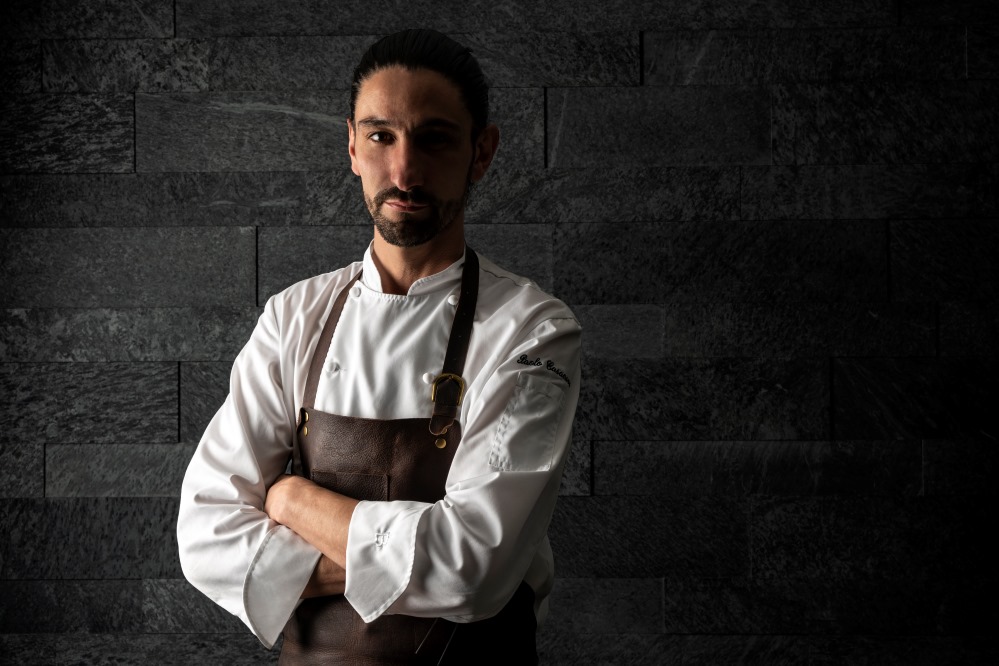
When did you first discover your passion for cooking, and what inspired you to become a chef?
I am a son of restaurateurs, my mother is a chef, and my father has been a hotel owner and manager for two generations.
Ever since I was a child, I breathed kitchen air, and my pastime was tidying up warehouses or peeling vegetables. My passion was born when I was attending hotel management school, and I started to realize that my profession would give me space for creativity.
How did growing up in Italy, in the beautiful Cortina region, influence your culinary style and approach to cooking?
I am from Belluno, Dolomites, more precisely from Campolongo di Cadore, a mountain environment with traditional Dolomite food. But the real luck for a cook born in Italy is the vast pool of ingredients, and the culinary tradition is enormous. In each of my menus, there is always a little piece of home.
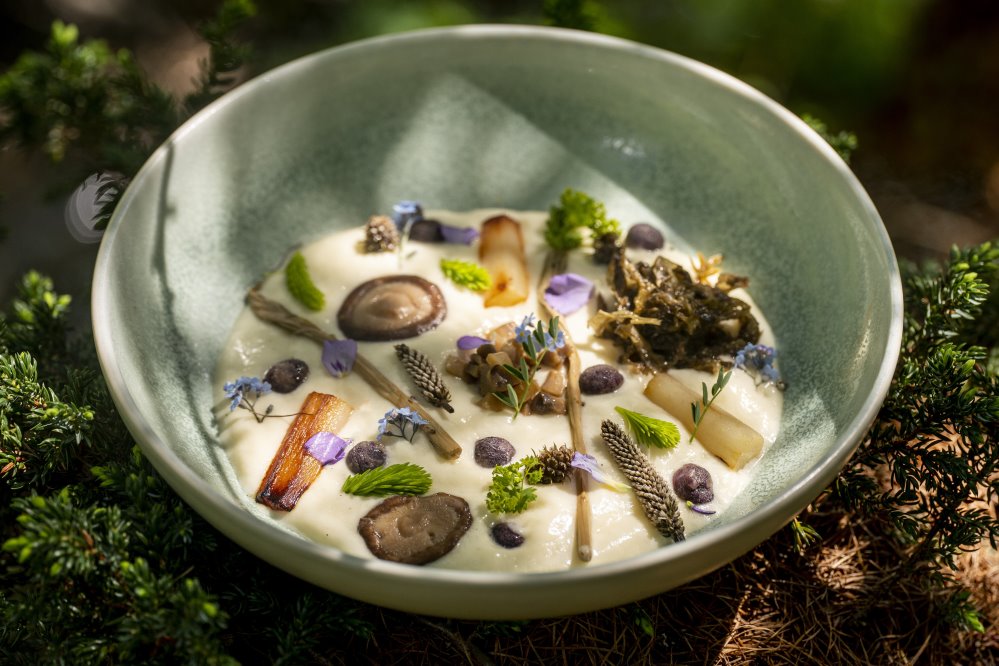
Can you share some insights into your experience working in Massimo Bottura's brigade and how it has shaped your career?
Working at La Francescana has been one of the most important things in my life, first of all because I saw the beginning when it still had only one star, and I stayed there until the arrival of the second star, thus experiencing the enthusiasm of the new. But above all, Massimo opened my mind and made me see that there is another way of cooking that still represents me today in my choices.
Can you describe your culinary style and the philosophy behind it? How significant sustainability and locally sourced ingredients are for you?
Creating with respect for the raw material: In the Colani kitchen we process ingredients with care and respect, paying particular attention to taste combinations, bringing out the beauty contained in the dishes.
Creating respecting the rhythm of nature: The strong link with the land and nature, respected in its rhythms and cycles, is a source of continuous inspiration for us. Each season has its own wild herbs and fruits that enter the dishes, infusing them with love and respect for nature itself.
The abundance of local resources has not stopped us; we have broadened our research horizons, using products from all over the world in our cooking. The ingredients available, e.g. lichen in April, dandelion in May, thyme and all wild herbs, and local mushrooms in September, enrich our recipes by keeping alive this close link with the land and its rhythm. Our research has led us to recognize 84 types of wild herbs, pine cones, roots, flowers, etc., a pool of ingredients that stimulates my creativity.
This has allowed us to offer our guests endless combinations of taste without ever straying from our philosophy and ensuring our diners an ‘all-round' taste experience from entrées through to desserts.
Technique: My relationship with technique, and my knowledge of it, is always alive and attentive, I find technique important as a means of getting your dish to the level you desire. In my kitchen, we ferment, spherify, bake, harvest, distil, and create. This is a natural path that makes me learn new techniques and gives me more and more opportunities to express my extremely personal cuisine territory and beyond…
I believe so much in the team and the involvement of people in the projects; in fact, the Colani team is a real orchestra in which every element moves in balance and communicates the harmony that shines through in the dishes.
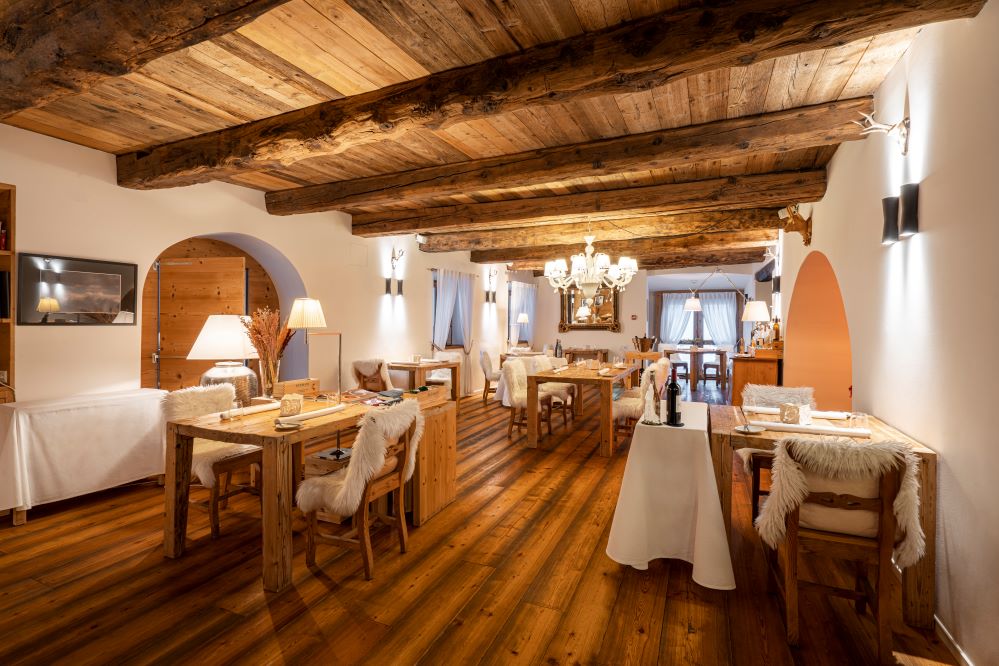
What motivated you to establish your restaurant and explore the fusion of technology and Italian cuisine?
After many years of opening for companies or entrepreneurs, I wanted to create something of my own that represented me, where I could do what I liked best.
Haute cuisine is constantly evolving, and technology is always advancing; I like to keep up with new techniques and technologies. We have come to have machines such as the rotavapor where we distil gin and botanicals, the Ocoo where we ferment and concentrate vegetables, etc, etc. Let's say that with the help of technology, we can create new and less fatty consistencies, so why not?
How do you strike a balance between pushing culinary boundaries and maintaining the core essence of Italian flavours in your dishes? What innovative techniques or ingredients do you incorporate into your cooking?
Maintaining the purity of the Italian tradition is today an almost absurd choice because many Italian recipes are hundreds of years old and date back to when people had a much greater energy requirement in today's sedentary life; that's why the technique helps us decrease the intake of unnecessary fats and sugars.
Mind you, where butter is needed, butter is put!
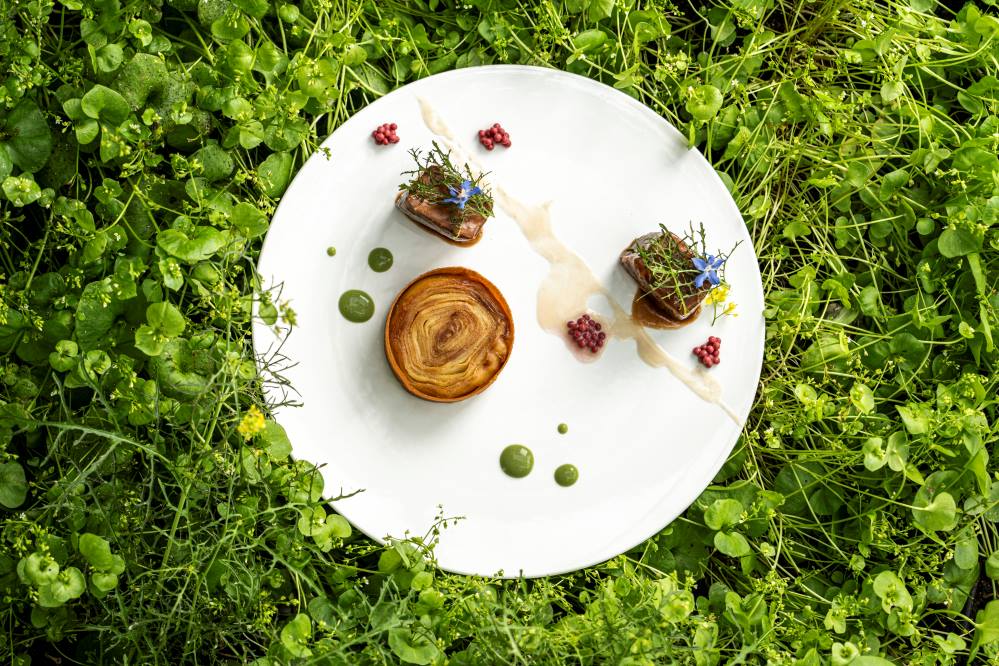
We heard that you, as a true Italian, love peperoncino 🙂 How do you balance the spiciness of peperoncino in your dishes?
As a good Italian, I like chilli, obviously, but to preserve my taste buds. I never abuse it. I find it an ingredient that undoubtedly has its strength and character. When I cook fish dishes with an Italian character I always add it, I also like to use it in cocktails or vegetable creams.
The most famous dish where I use it is, undoubtedly, Linguina with garlic, oil and chilli pepper with red prawns, which over the years has become our must, adored by the German public and also by the Italian one.
What is the signature dish of Colani restaurant, and what makes it unique? Can you share any anecdotes or memorable experiences related to its development?
The dish that has been with us for the longest time is the deer fillet in a salt and hay crust. This dish was born in 2017 from a joke by a local hunter who said: “Hi Paolo, I know you are the new manager of the Colani, and I wanted to tell you that I killed a deer and that if you clean it for me, we can do half of the meat if you like then you can prepare a deer fillet for my wife and me” (closing the question with “even if you're Italian and you only cook fish well”). At that point I wanted to joke with him a bit and without saying anything I prepared him a venison in a salt crust as sea bass is usually prepared just to tease him with sympathy. Well, today the deer has become our signature dish and the hunter is a friend of mine.
What role does seasonality play in your menu creation, and how do you incorporate it into your dishes?
Seasonality plays a fundamental role in my kitchen, I like to interpret the moment, and therefore I am closely linked to the season. Plus we gather wild herbs, which leads us to cook what we collect during the day.
With the fermentation technique, we can also use the products we harvest during the winter. Let's say that the rhythm of the restaurant is dictated by nature before me.
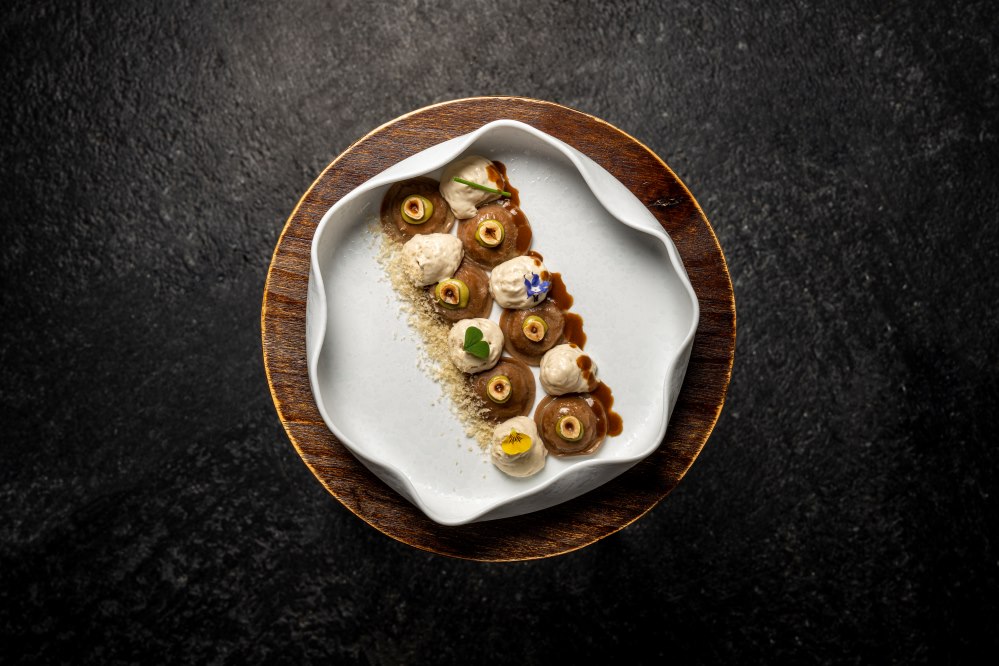
What advice would you give aspiring chefs who aim to create innovative and extraordinary culinary experiences like yours? What special qualities should a successful chef have?
When aiming for quality, the first thing you need to do is have a thought that quality is worth it, so think well, work on yourself and on your relationship with your ego. Remember that we don't save lives, but we can improve them.
Then it's essential to surround yourself with honest and valid collaborators. Otherwise you can't do anything alone. In three words: humility, sacrifice and beauty.
Can you share a memorable culinary experience that has influenced your cooking style?
Undoubtedly, the experience that touched me the most was a lunch at the Fat Duck. Heston Blumenthal is an all-round genius. I really like his way of narrating and his sensitivity to the palate.
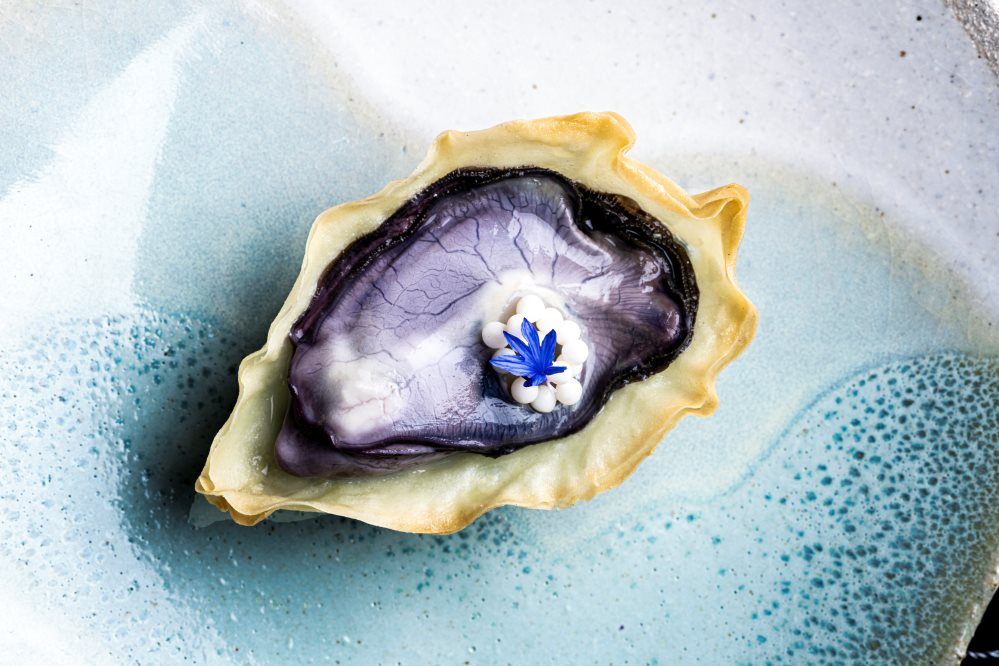
How do you handle feedback and criticism, and how does it impact your approach to cooking?
Those who work with passion, like me and many other chefs, always find it very difficult to dislike criticism. After years, I have come to understand that feedback and criticism are among the most important things for us and those that help us grow professionally. The advice I give to everyone is to let go of pride and ego and always evaluate a criticism on the assumption that listening to it can only help us.
Can you recall a situation when you had to improvise a dish quickly due to unexpected ingredient unavailability, and how did it turn out?
I remember one situation, we should go back to around 1999. I worked in the Valdobbiadene Treviso area, I arrived for my first day of work with a colleague of mine. We arrived in the middle of nowhere at the staff lodgings, hungry and with only 500 gr of rice.
I remember that I performed a miracle, I picked some wild spinach and a wild onion, but we only had a pan and there was no kitchen in the house, so I took the iron, put it on maximum power and put the pan on it and made them a risotto with wild spinach cooked on an iron.
How do you unwind after work or during the holiday? What other things, beyond cooking, make you happy?
One thing that relaxes me is working with wood, I love sanding wood, cutting it and creating mobile tables or objects with it. My daily outlet is undoubtedly going to collect herbs with the mountain bike; being immersed in nature rebalances me and fills me with beauty.
Regarding the holidays, after a youth backpacking, now with my wife and my son, we love camping.
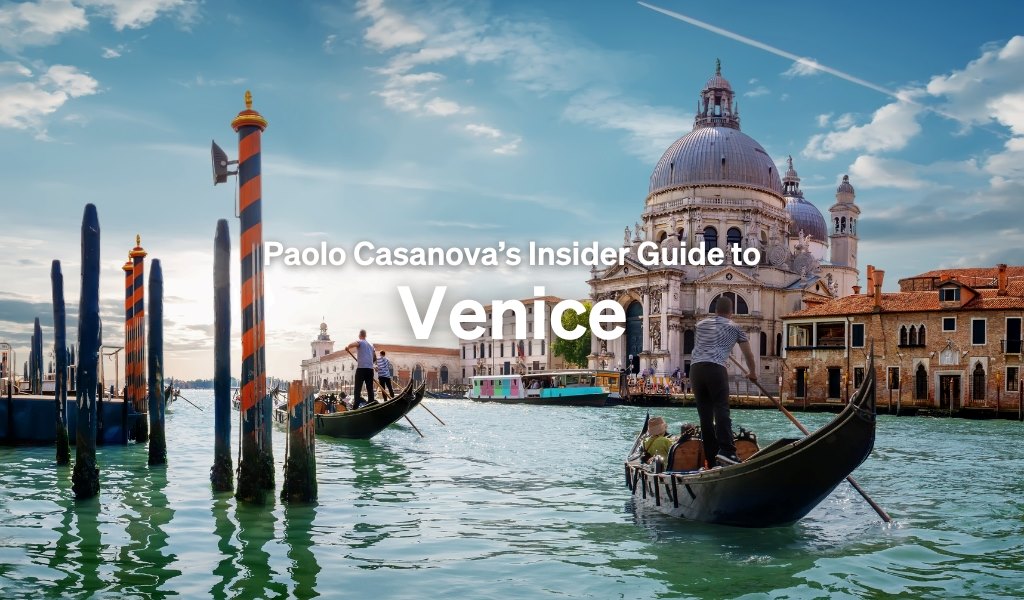
Finally, please share with us which is your favourite city. And what five spots would you recommend visiting there?
Very difficult question, I love Berlin, Lisbon, and Copenhagen, but I will choose Venice because it is unique, special, and irreplaceable. Everything about Venice is special: the transport, the people, the sounds…
The most beautiful things in Venice:
- Getting lost… getting lost in the streets of Venice and discovering corners in complete solitude is magnificent.
- In addition to the innumerable works of art that make it famous, Venice is wonderful during the Carnival, during the Biennale and the Venice Film Festival.
- I recommend the islands of Murano, Burano and Torcello.
- Ca’ d’Oro Alla Vedova restaurant is a typical tavern, osteria where you can eat excellent sardines “in saor” and “schie with polenta” in a Venetian atmosphere.
- Final advice, try to visit Venice at night from 2 am onwards and let yourself be carried away by your imagination.
Thank you very much, Paolo! It was a pleasure!
Photographs: Nicolò Brunelli
Read more:
- Zurich Weekend Guide by NOBLE&STYLE
- Wellness Hotels in Switzerland
- Visit the Italian Lake Country and Relax in One of These Hotels
Last Updated on March 16, 2024 by Editorial Team
As editor-in-chief, Raffaele infuses the magazine with a cosmopolitan flair, drawing from his experiences in London, Berlin, New York, and Barcelona. His 20-year tenure with luxury brands, coupled with a love for travel and food, enriches the magazine's content.






